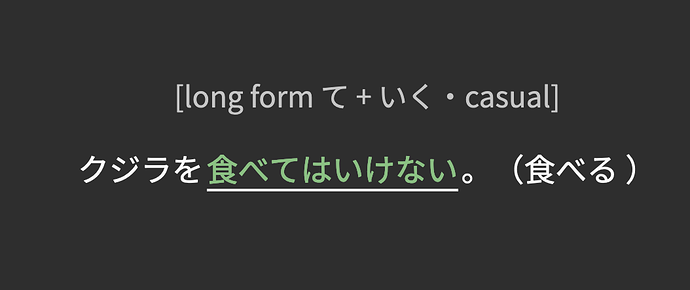I’m a little confused by the Tool Tips that appear during some of the reviews.
The following says ‘long form て + いく’ and it’s looking for 〜てはいけません (must not do)
But, in this sentence, it says basically the same thing ‘long from て + なる’ (must do).
I believe that for the cards which are looking for {なくて・なければ} {ならない・いけない} are essentially the same. The point is, it can be difficult to distinguish them, given the tool tips. I know you can just erase your answer and re enter it until it’s correct, but I’m wondering if there is a better way to indicate what is being sought after.
And then there are other cards that have no tool tip, but the correct answer could be any number of things.
Is the expectation just to memorize all of the sentences that fall under a grammar point?


